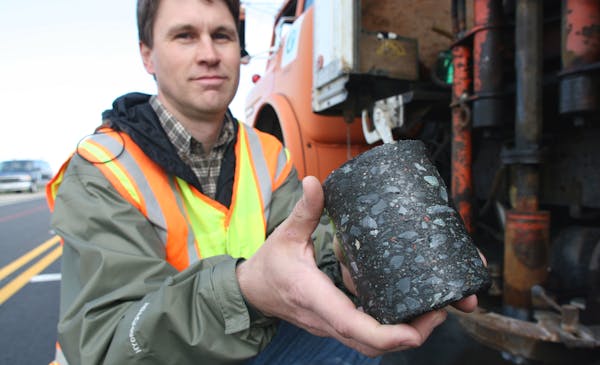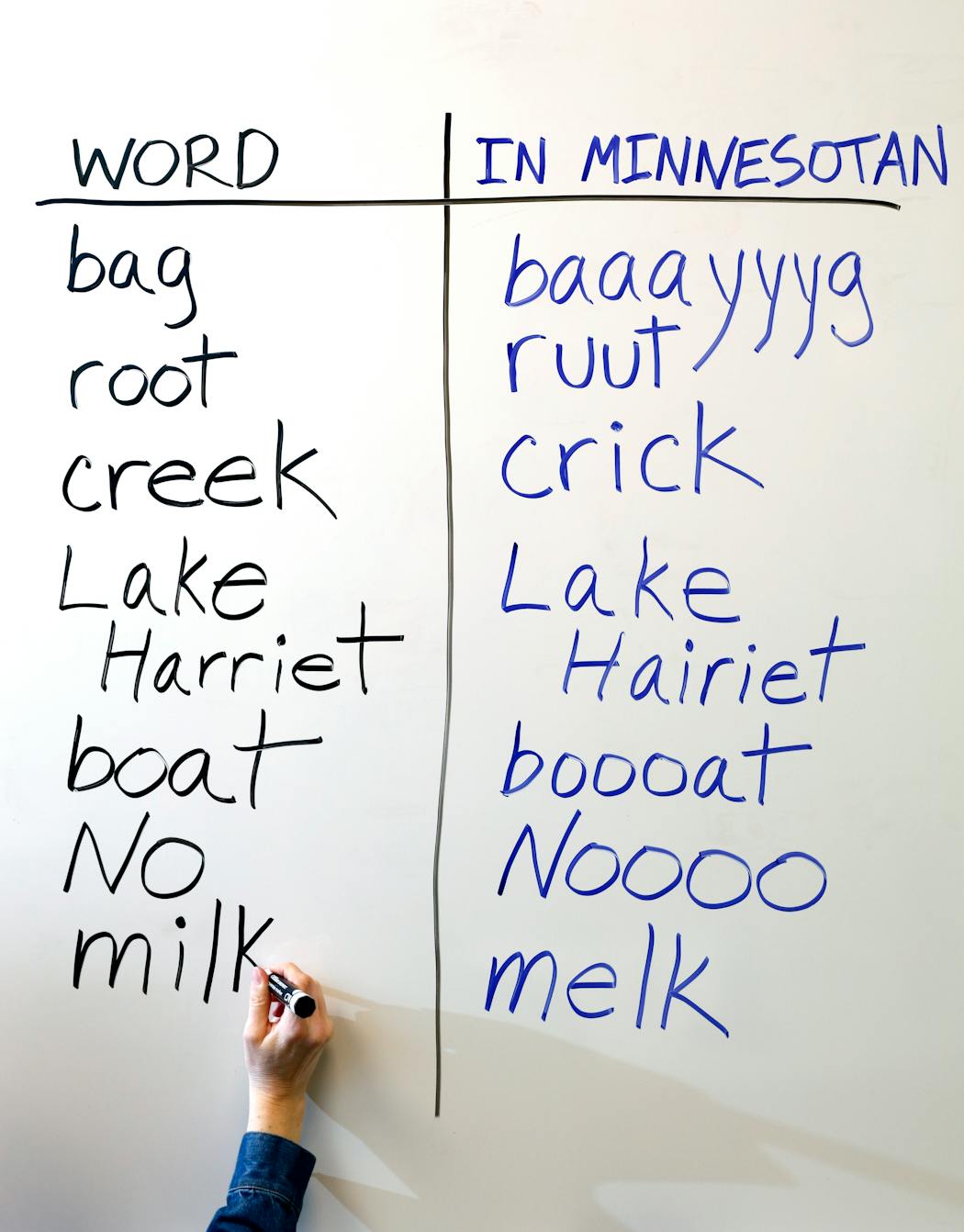Why do Minnesotans have accents?
Listen and subscribe to our podcast: Via Apple Podcasts | Spotify | Stitcher
The key to detecting a Minnesota accent can be as simple as asking someone to pronounce the name of our state. The so-called "Minnesota o" — as long as a Minnesota goodbye — is among the accent's most distinct characteristics.
That flat, nasal Minnesota accent has come to symbolize a folksy charm. After "Fargo" infamously showcased the niche dialect, it became a subject of curiosity and consternation. Hollywood actors who have portrayed Minnesotans say it's the toughest accent they've tackled.
And even native speakers want to know more. "Why do Minnesotans have accents?" was one of the most popular questions submitted by State Fair attendees this year to Curious Minnesota, the Star Tribune's reader-powered reporting project. Fairgoers voted on their favorite submissions.
Linguists have no trouble defining the characteristics of the accent. But its origins are a murkier subject.
"That's where the controversy is," said Daniel Haataja, a linguist who teaches Finnish and phonology at the University of Minnesota, when asked about the accent's origins. "I don't think it's settled."
Many linguists attribute Minnesotans' unusual single-tone pronunciation of long "a"s and "o"s to the influence of Scandinavian settlers, as those sounds are common in languages of that region.
But Minnesota's large number of immigrants from Norway and Sweden didn't arrive until the latter half of the 19th century, Haataja noted. The first Europeans to settle the area were largely English speakers from the British Isles. And both Scottish English and Irish English speakers are known for those same long "a" and "o" pronunciations.
"So the question is whether those characteristics were already existing in the English of the earliest English-speaking immigrants," he said. "Or whether those characteristics came from Swedish and Norwegian."
Accent characteristics
Accents are one aspect of dialects, which are variations in a language's pronunciation, vocabulary and grammar.
Not all people from the same place sound the same. Linguists note that speech is influenced by identity characteristics such as age, race/ethnicity, socio-economic status and whether a language is the speaker's native tongue.
But there are broad similarities in Minnesotans' dialect, shared by others in our North Central linguistic region, which includes the Dakotas, parts of Iowa, Wisconsin, and the Upper Peninsula of Michigan.
"Bright" and "flat" are how Keely Wolter, a Richfield-based accent and dialogue coach, describes the characteristic Minnesota accent.
The mouth position involves tension in the lips and little jaw movement, Wolter explained.
"As Minnesotans, we tend to keep our jaws and lips pretty tight," she said. "It's almost like we're doing a bit of a tense smile, which I think is a nice manifestation of the Minnesota Nice idea."
This "oral posture" creates the high, tight vowel sounds — the flat "a" in "bag," for example (which sounds like "bayg").
But the sound most associated with a Minnesota accent, Wolter said, is the long "o." It is pronounced as what linguists call a monophthong — one pure sound. In the rest of the United States, "o" is pronounced as a diphthong with two sounds ("o-ah").
Wolter is making a documentary film on the Minnesota accent, after receiving many requests for information about it and finding few examples to share. (Howard Mohr's 1987 classic, "How to Talk Minnesotan," focuses more on the dialect's vocabulary and understated communication style.)
To outsiders, Wolter said, the Minnesota accent suggests the speaker is kind but perhaps naïve, citing Rose Nylund on "The Golden Girls" as an example. "That's why I think a lot of people who have the accent don't like it," she said.
Many documentary subjects Wolter interviewed at the Minnesota State Fair used critical terms to describe their accent's strength. "People would say they thought they had a really bad accent, or their accent was not so bad," she said.
But speech enthusiasts are often drawn to the accent for its unique charm, Wolter said. "There is a cuteness and a sweetness to it, which is really appealing to a lot of people — especially people who coach accents," Wolter said.
Forces of extinction
The way we speak is a cornerstone of how we see ourselves and how we want others to see us. We often mimic speech patterns of those around us, Wolter said, just as we are compelled to mirror facial expressions — to be accepted by the group.
Our ability to change the way we speak in different settings, often subconsciously, helps retain niche dialects, Haataja noted. This counteracts the pressure for language to homogenize, which is caused by increased transience and media.
"You do hear the Minnesota accent is kind of smoothing out and softening over time," Wolter said. "We're losing some of that beautiful, sing-songy, tight vowel sound that we used to have."
Wolter encourages Minnesotans to embrace their accent and keep it alive.
"I just want everyone to love it as much as I do," Wolter said. "I want us to stop feeling accent shame."
If you'd like to submit a Curious Minnesota question, fill out the form below:
Read more Curious Minnesota stories:
What are the origins of the term Minnesota Nice?
Sorry, but why do Minnesotans say 'ope' all the time?
Should Minnesota be considered part of the Midwest?
How did Minnesota become the Gopher State?
Is Minnesota actually more German than Scandinavian?
How many people live their entire life in Minnesota?




